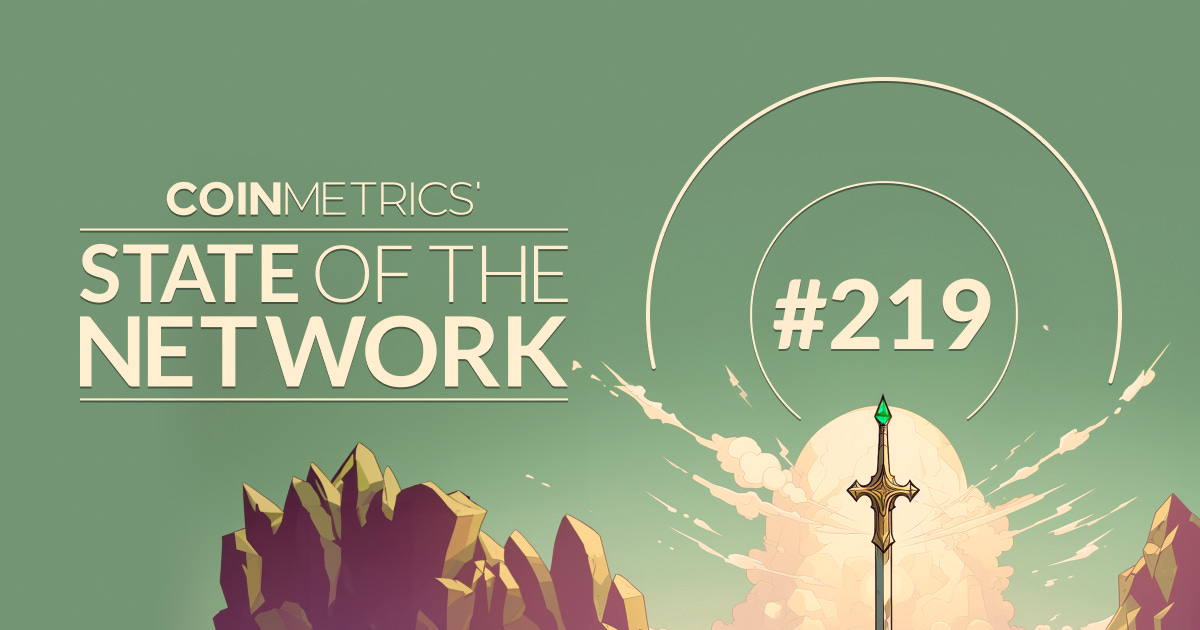Coin Metrics’ State of the Network: Issue 219
DeFi’s Double-Edged Sword
Get the best data-driven crypto insights and analysis every week:
DeFi’s Double-Edged Sword
Unpacking the Features & Risks of DeFi Lending
By: Tanay Ved, Lucas Nuzzi & The Coin Metrics Team
Over the years, the digital asset ecosystem has spawned diverse use-cases. Among them, decentralized finance (DeFi) has emerged as a transformative force—enabling a host of financial innovation by building on conventional financial principles and harnessing the unique properties of blockchains. Although the sector still remains in its early innings, this intersection between finance and technology has materialized into an array of financial services, facilitating the issuance, lending, trading and management of crypto-assets, and even real-world assets.
The Ethereum Network has served as a hotbed for these services. Within the larger scheme of things, however, DeFi remains a nascent sector, with the market capitalization of DeFi ERC-20 tokens accounting for around 6% ($14 billion) of the total ETH market capitalization (~$220 billion), and 17% at its peak in 2021.
Source: Coin Metrics Formula Builder
Despite this, it forms the largest sector amongst digital asset applications, representing greater than 50% of the asset class (datonomy universe). This can be attributed to DeFi's ability to provide open, permissionless, and programmable access to financial services, underpinned by the transparency and auditability of blockchains. This sets DeFi apart from its traditional counterpart, where the core innovation lies in smart contracts that facilitate a host of financial services, effectively eliminating the need for intermediaries or counterparties.
Source: datonomy
Furthermore, DeFi protocols are often referred to as ‘money-legos’ due to their composable nature. These apps can be used in conjunction with one another, allowing users to stack financial strategies like building blocks. For example, a user can lend ETH on Aave to earn interest, borrow a stablecoin like Dai and then provide the stablecoin as liquidity on Uniswap to earn trading fees—unlocking greater capital efficiency and interoperability.
Source: Coin Metrics Formula Builder
However, with this increased innovation and access to information, the surface area for risks has also expanded. While greater transparency, composability and self-custody form the core foundation of DeFi, they also push complexity back towards its users and stakeholders. Therefore, the very properties that make DeFi unique, can be a double-edged sword.
Hence, contextualizing the health of DeFi protocols through a holistic view of assets and liabilities becomes crucial for informing effective risk management. In our new special insights report, we zoom into DeFi lending markets to illuminate their unique features and risks, particularly through the lens of recent exploits on Aave and Curve Finance—using a balance sheet-like methodology.
User Research Opportunity
Want to shape the future of cryptoasset data analytics? Join our User Research study to share your thoughts on our newest ideas and provide valuable feedback. Upon completion, participants will be eligible for 1 of 5 exclusive API keys, typically only available to institutions, for access to our professional data sets.
Network Data Insights
Summary Metrics
Active addresses on Ethereum rose 10% over the week, but remained under 500K per day on average. Activity on Ripple rose, with active addresses and transfers spiking. DeFi tokens remained active as well, including CRV, AAVE, UNI, and COMP.
Coin Metrics Updates
This week’s updates from the Coin Metrics team:
Coin Metrics Providing Data Feeds to Support Aark Digital’s Perpetual DEX (press release)
Explore the digital assets ecosystem through our entire catalog of original data-driven research.
As always, if you have any feedback or requests please let us know here.
Subscribe and Past Issues
Coin Metrics’ State of the Network, is an unbiased, weekly view of the crypto market informed by our own network (on-chain) and market data.
If you'd like to get State of the Network in your inbox, please subscribe here. You can see previous issues of State of the Network here.







